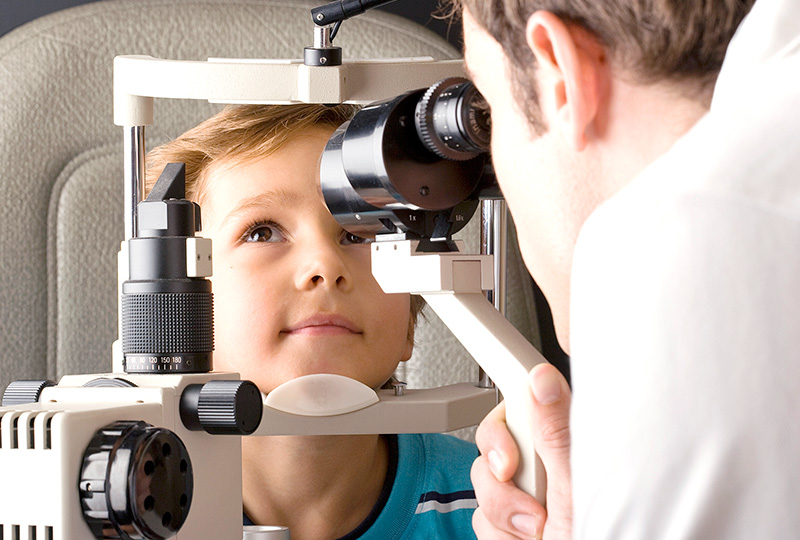Laser eye surgery has transformed the way millions of people experience the world. From blurry vision to crystal-clear sight, the impact is life-changing. But this isn’t just about modern convenience — ongoing advancements in technology continue to improve safety, recovery, and outcomes. In this article, we explore how laser eye surgery is evolving, what patients can expect, and why this procedure remains a cornerstone of vision correction.
What Is Laser Eye Surgery?
Laser eye surgery is a medical procedure designed to reshape the cornea — the clear front surface of the eye — to correct refractive errors such as nearsightedness (myopia), farsightedness (hyperopia), and astigmatism. By adjusting how light enters the eye, the procedure allows images to focus properly on the retina, improving vision clarity without the need for glasses or contact lenses.
Common Types of Laser Eye Surgery
- LASIK (Laser-Assisted In Situ Keratomileusis)
In LASIK, a thin flap is created on the cornea, and a laser reshapes the underlying tissue. The flap is then repositioned.
Recovery: Most patients notice clear vision within 24–48 hours. - PRK (Photorefractive Keratectomy)
PRK removes the outer corneal layer before laser reshaping. It’s ideal for patients with thinner corneas.
Recovery: Vision may take 1–2 weeks to fully stabilize. - SMILE (Small Incision Lenticule Extraction)
SMILE involves creating a small lens-shaped piece of tissue inside the cornea, which is then removed through a tiny incision.
Recovery: Rapid; many patients return to daily activities within a few days.
Who Is Eligible for Laser Eye Surgery?
- Adults over 18 with stable vision for at least one year.
- Healthy corneas and good overall eye health.
- Individuals without severe dry eyes, glaucoma, or corneal diseases.
- Not pregnant or breastfeeding.
A detailed eye exam with a qualified ophthalmologist determines suitability and the best type of procedure.
How Laser Eye Surgery Works: Step-by-Step
- Preparation
Eye drops numb the eyes, and a protective device keeps eyelids open. - Corneal Reshaping
Depending on the surgery type, a precision laser reshapes the cornea for optimal vision correction. - Completion
In LASIK, the flap is repositioned; in PRK and SMILE, the cornea heals naturally. - Post-Procedure
Patients usually go home the same day. Recovery instructions include using prescribed drops, avoiding eye rubbing, and protecting eyes from UV exposure.
The entire procedure typically takes 10–15 minutes per eye, and modern lasers make it virtually painless.

Real Patient Experiences: Evolution in Action
1. Emily, 28 – LASIK
Emily had mild myopia. She noticed significant vision improvement the next morning and was back at work two days later.
2. Mark, 35 – PRK
Mark’s corneas were too thin for LASIK. His recovery took a little longer, but he appreciated the long-term stability and minimal risk of flap complications.
3. Sarah, 24 – SMILE
Sarah opted for SMILE to correct her astigmatism. She experienced little discomfort and resumed her daily activities in just a few days.
4. John, 42 – LASIK
John struggled with dry eyes before surgery. Post-procedure, he followed strict aftercare and achieved clearer vision without long-term irritation.
5. Priya, 30 – PRK
Priya’s PRK journey required patience, but the gradual improvement over two weeks gave her excellent, stable vision results.
Common Sensations and Challenges
Patients often report:
- Temporary dryness or mild irritation.
- Blurry vision during the first 24–48 hours.
- Sensitivity to light in early recovery.
How doctors manage them: Lubricating eye drops, protective shields, and thorough post-operative instructions help minimize discomfort and speed up recovery.
Benefits Patients Enjoy After Recovery
- Sharper vision: Many achieve 20/20 or better eyesight.
- Freedom from glasses or contacts: Daily convenience and enhanced lifestyle flexibility.
- Confidence boost: Clear vision positively impacts professional and personal life.
- Minimal long-term side effects: Modern technology ensures safety and lasting results.
Advances in laser technology continue to enhance outcomes and reduce recovery time, making the procedure safer than ever.
Conclusion: Embrace the Future of Vision
Laser eye surgery has come a long way — and it keeps evolving. With multiple procedure types, safer lasers, and improved recovery protocols, vision correction is more accessible and reliable than ever. If you’re considering laser eye surgery, consult a qualified ophthalmologist to find the best approach for your eyes. Your journey from blurry to brilliant vision starts with informed choices and expert guidance.
FAQS
Laser eye surgery is generally painless. Patients receive numbing drops and often report mild pressure or light sensitivity during the procedure. Most discomfort resolves within a few hours, and modern lasers make the experience quick and safe.
Recovery varies by procedure. LASIK and SMILE patients often see clearly within 24–48 hours, while PRK may take 1–2 weeks. Full stabilization of vision can take up to 3 months, especially for PRK.
Not everyone qualifies. Ideal candidates are adults with stable vision, healthy corneas, and no severe eye conditions. A detailed eye exam is necessary to determine suitability and the best type of procedure.
Patients may feel mild pressure, light sensitivity, or a brief burning sensation. Numbing drops and advanced laser technology minimize discomfort, and trained ophthalmologists ensure the process is safe and controlled.



